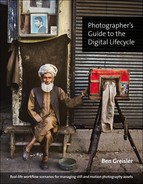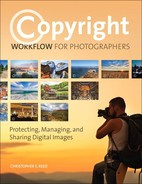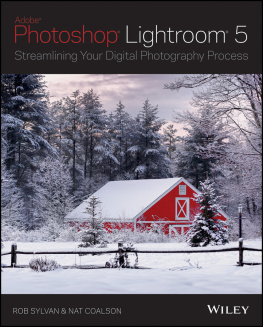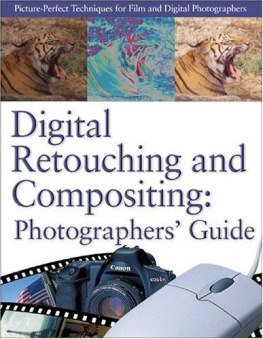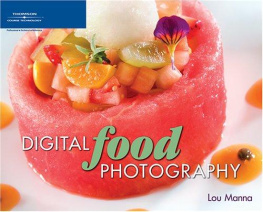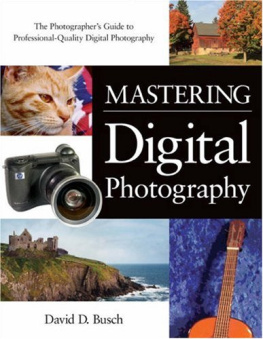This book was made possible by the support, patience, and love of my wife Ronit and our children, Galee and Noam. Thank you from the bottom of my heart.
Acknowledgments
What an amazing journey! I have to thank Rebecca Gulick for listening to my idea and making it happen for me. Anne Marie Walker did an amazing job editing my words, and I am grateful to have had such a pro on my side. Thanks to Howard Goldstein for his technical expertise and review. My hat is off to the rest of the Peachpit/New Riders crew for all its efforts bringing this book into reality.
A big thanks to the folks at Steve McCurry Studios who were all very supportive and helpful: Steve McCurry, Bonnie VSoske, Hillary Rose, and Sonny Fabbri. Special thanks to photographers par excellence Rick Davis, John Wynn, Tori Deslauriers, and Sarah Bones for their continued friendship, support, and help.
Additional guidance and pictures were provided by George Blood, Nick Choo, Mike Rossi, Randy Seaks, Ben Levy, Todd Schneider, Arek Dreyer, and Pam Lefkowitz. Technical and conceptual help was provided by Mathieu Mat X Mauser, Gerard Hickey, Dr. Robert Kite, Sarah Higgens, Graham Pryor, Kevin Ashley, Noah Wardrip-Fruin, and Nick Montfort. Jeremy Hammer, Alexandra Tornek, and John Gorman inspired and created artwork for the book.
Many thanks to my father, Jay Greisler, and my great-great-grand uncle David Finklegreen who helped inspire this story and all the other great artists who give us enjoyment and knowledge.
Introduction
The world is wonderfully awash in digital data, and you are one of the people creating it. You take your ideas and concepts to the world in the form of images and sound. You get people to pay attention to your work, whether it is for a commercial client, the sake of art, or simply your desire to have some fun. In the past you might have created your works with a film still camera, a Bolex movie camera, or a reel-to-reel audio tape recorder. Now you use digital cameras that output both stills and video, computers for audio creation, and electronic drawing tablets. No matter what you use, all of your work results in a digital data file.
So how do you manage all that data?
This book will help you organize and process your creative data in a way that protects it from the time of conception through to archiving it. You will learn how to control your information so it remains easy to find and is quickly available to you. This book will also help you keep your digital files safe and useable now and in the future.
Who This Book Is for
This book is for all of you who create or manage content that you store as a digital file. I like to refer to you as creatives because your artistic skills go beyond just photography, videography, or other media types. Although Ill use the term creatives to describe the entire reading audience, Ill also use photographer, videographer, or another specific term when I want to define a specialty.
You might wonder whether this book is for beginner, intermediate, or advanced photographers. Well, in a sense it is for all photographers regardless of their level of proficiency at their craft because the book is for all creatives who need to learn more about how to handle their data, the fruit of their efforts. Even 30-year professionals will find the need to learn about the new techniques and processes of their craft from time to time.
When writing the book, I assumed readers would have a certain level of knowledge about their craft. I based the level of knowledge on my experience with hundreds of creatives I know personally and professionally. I tried to err on the side of caution and be realistic about the readers level of ability.
Knowledge, when graphed, forms a range of peaks and valleys. The peaks indicate expertise and the valleys indicate areas of lesser knowledge. My goal is to help fill in those valleys while respecting the peaks.
Although the title of the book asserts that it is a Photographers Guide, which is true, the techniques you will learn can be applied to any digital workflow. This can include workflows carried out by graphic artists, videographers, musicians, and artists of all types. In fact, the trend shows an increase in the cross-pollination of media.
The tools currently available to you make this cross-pollination almost second nature. Digital still cameras are capable of producing high-definition video. Video productions rely heavily on still graphics and computer animation. Music is scored for video and slide show presentations. Projects are likely to contain multiple types of media.
Why is this important to you? As an example of how this cross-pollination impacts you, lets look at a common situation: A still photographer decides to take advantage of the video capability of his camera. When shooting stills, his typical RAW file size might be approximately 26 MB, which translates into all of 4 seconds of video or 24.3 GB an hour. But a minute of video produces a 405 MB file. This is another world in terms of data storage management and requires different thinking. In this book you will explore the similarities and differences of managing data across multiple formats.

